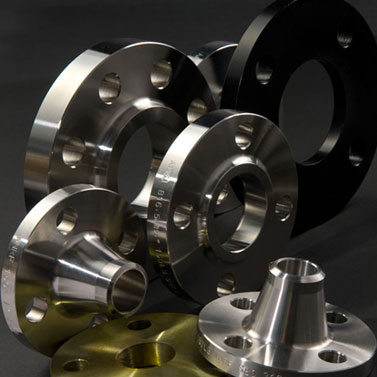Steel flanges provide easy access for cleaning, inspection, or modification. They usually come in round shapes, but they can also come in square and rectangular forms. The flanges are joined to each other by bolting and joined to the piping system by welding or threading and are designed to the specific pressure ratings; 150lb, 300lb, 400lb, 600lb, 900lb, 1500lb and 2500lb.
A flange can be a plate for covering or closing the end of a pipe. This is called a blind flange. Thus, flanges are internal components that are used to support mechanical parts.
MOST POPULAR FLANGE STYLES
WELD NECK FLANGE
Ours the most frequently requested flange, the Weld Neck Flange features a neck extension and weld bevel. Provides a natural form connection ideal for larger, high-pressure applications.
SLIP-ON FLANGE
A simple alternative to the Weld Neck flange, a Slip On Flange is designed to accept the pipe into the center/bore, allowing welding around the outer diameter of the pipe.
BLIND FLANGE
Designed to cap off a line, a Blind Flange has no bore or inner diameter. They are often altered to include NPT threads or custom boreholes to function as hubless Slip On flanges.
SOCKET WELD / COUNTER BORE FLANGE
Sometimes referred to as Counter Bore flanges, the Socket Weld types have a socket to insert pipe when space limitations make Weld Neck flanges difficult to use.
THREADED / COMPANION FLANGE
Threaded or Companion Flanges contain a female NPT threaded center for connection to male threaded piping. These flanges are commonly implemented in reducing connections.
LAP JOINT FLANGE
Lap Joint Flanges are intended to saddle over a stub end fitting. They feature an extended hub and a machined radius at the base of the flat face.

